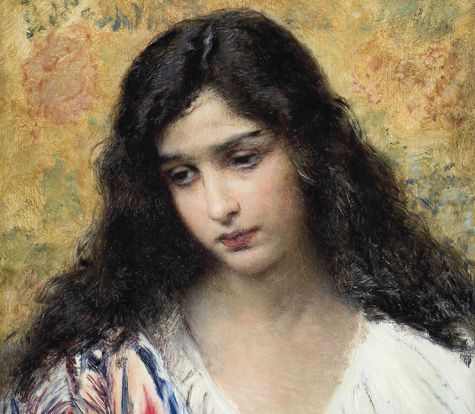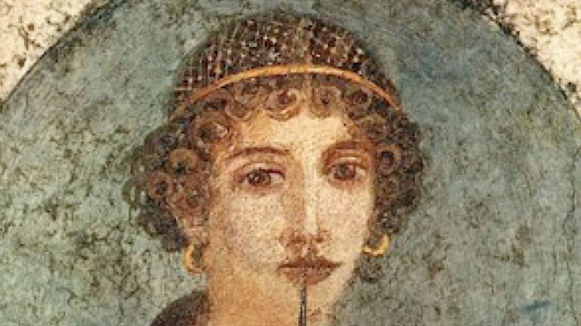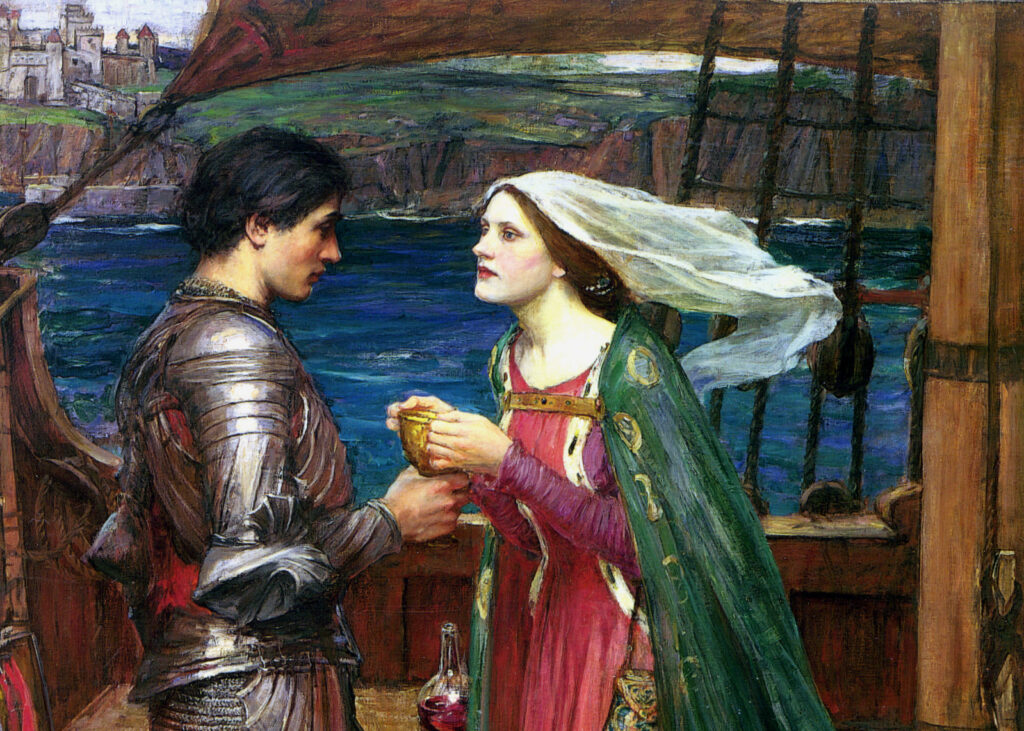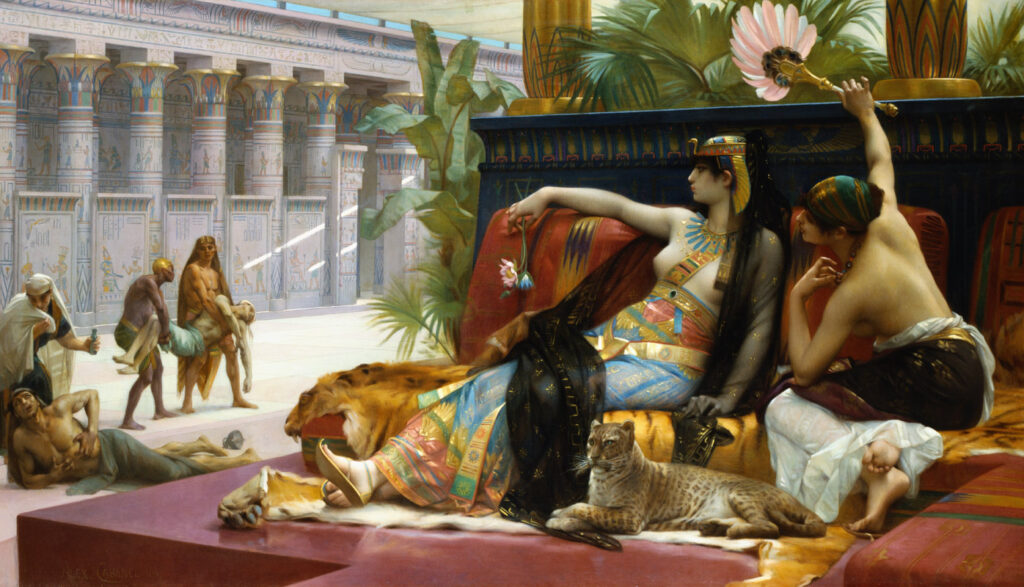Home » Topics / Subgenres » Love/Romance (Page 2)
Category Archives: Love/Romance
First Love
(Первая любовь)
Ivan Turgenev
1860
(A young man is thrown into the sweet agony of unrequited love for his beautiful new neighbor.)

Woldemar, a young man of sixteen, experiences the whirlwind of love descending on him for the first time, as he becomes acquainted with the beautiful and elegant Zinaida, the daughter of a princess, who has moved in next door. She enjoys a crop of suitors, and in her charming and carefree way pits them against each other. They make fools of themselves competing for her attention and smiles; but Woldemar is different, so awed he is in her presence. She is very kind towards him, and eventually gives him more attention than any other. He is enraptured, able to think of nothing else, obsessed with thoughts and dreams of her. He is overcome with the pain of his unrequited feelings, and is blissful when with her, sent into reverie with every careless touch or soft look. In this experience he realizes the power of love, and the strong—even dangerous—grip it can have on a person. Meanwhile, although he pays little attention to it, his home life is unsettled, with his parents often arguing.
Sappho’s poetic fragments
Sappho
7th-6th centuries BC
(The tenth muse expresses beauty, love, and the contents of her heart.)

Αιαι. Aiai! If only our dinner hosts still upheld the custom of ordering beautiful recitations over the wine! So it was in the days when some, at least, still believed in the Muses. On one of these evenings, Solon the Athenian stopped his nephew Execestides, who had just sung a song. “Teach it to me,” he said. Then he turned to an inquiring fellow guest. “I want to learn it and die.” (Aelian, in Stobaeus’ Anthology 29.58). The ancients spoke of only one poet in such tones: Sappho (Σαπφώ, spelled in her dialect Ψάπφω). Strabo called her the greatest poetess (Geography 13.617). Her people the Mytilenaeans engraved her on their coins (Pollux, Vocabulary 9.84). Plato called her the tenth muse (Palatine Anthology 9.506). We can surmise, then, how precious her works must have been to these many admirers through the centuries, these classical devotees of expression and imagery. Once, a volume of her poetry was taken from the town hall of Syracuse. “How sorely this stolen Sappho was missed,” moaned Cicero, “is almost more than words can tell” (Orations against Verres 2.4.57). Who would have thought that anything could even “almost” leave our eloquent Tully at a loss for words! But just imagine how his tongue would have failed him if not just one volume but her entire works had been stolen, and not just from a town library but from the whole world! For we are in this very state today, by some unhappy accident of history. All we have of her nine books of poetry are a couple hundred fragments, most of them mere words or phrases that scholars have gleaned painstakingly from quotations throughout Greek and Latin literature. A great irony lies in the epitaph Pinytus wrote for her, whose promise has sadly failed: “This tomb hath the bones and the dumb name of Sappho, but her wise utterances are immortal” (Palatine Anthology 7.16).
The Romance of Tristan and Iseult
(Le Roman de Tristan et Iseut)
Joseph Bédier
1900
(A knight and a lady pursue their magical love through bloodshed and sorrow.)

When tales pass through centuries of retellings, they tend to become what of audio media we would call “overproduced”: too many interpreters have slanted the story their various ways, too many embellishments and new episodes have been inserted, too many accommodations and updates have aimed at suiting the fancies of each audience. In the process the story can lose some of its grip on our imagination and our romantic sensibilities. It can be so cobbled and abused that we are left to distill the heart of it as best we can from a variety of sources. The only way such a beautiful old tale could ever be told today in anything like its original form and spirit, would be for three literary virtues to unite: a single author must be simultaneously an expert scholar, a great poet, and above all, modest. Only a scholar will know the history of the work; will be able to distinguish the wheat from the chaff in elements of theme, characterization, and plot; and will sufficiently understand an ancient teller’s perspective so as to effectively reproduce it. And only a great poet will be able to convey this perspective, and the story itself, with convincing unity and supreme skill; expectations of quality and beauty are lofty when we pick up a beloved and popular story. And finally, many a great poet and scholar will have great pride as well, in which case there will be too much of the writer and not enough of the legend in the text. Granted, we love our authors’ egos when it is them we want to see; but if the aim is to represent something of the original (or at least old) character of a romance, an author must exercise admirable self-control. We can thank Joseph Bédier for being this author in all respects for the legend of Tristan & Iseult.




Tom Jones
June 4, 2014 / Leave a comment
Henry Fielding
1749
(Tom really wants to be good for the sake of his love Sophia, but his nature keeps getting in the way!)
It is prudent to be morally pure– there can be weighty unseen consequences to any moral failure. Fielding’s signature novel has this ponderous theme, and yet manages not to be at all heavy-handed but funny, colloquial, at times bawdy, ironic, rollicking. The theme is kicked here and there and tossed around like a ball, but it is pervasive nonetheless: throughout this History of Tom Jones, A Foundling, from his birth to the point at which he finally comes to the beginning of what promises to be a good and happy life with Sophia, all of Tom’s sundry dilemmas and anguishes are a result of his own moral weakness. Although an otherwise upstanding and honorable individual, poor Tom cannot seem to surmount two kinds of temptation: to lust and to folly. He repeatedly places himself into compromising situations with women that– even if Fielding’s presentation of them makes us smirk– only prove disastrous to him through his family or his beloved. Also, to achieve his goals he often resorts to schemes that involve some deceit; they always backfire on him in the worst way imaginable. We see Tom, and rightly so, as a victim of Fortune throughout the book; but he lays himself open to Fortune’s whims by his actions, and so he has lured his own fate. No elements of the plot of this book are foreign to this theme.
(more…)